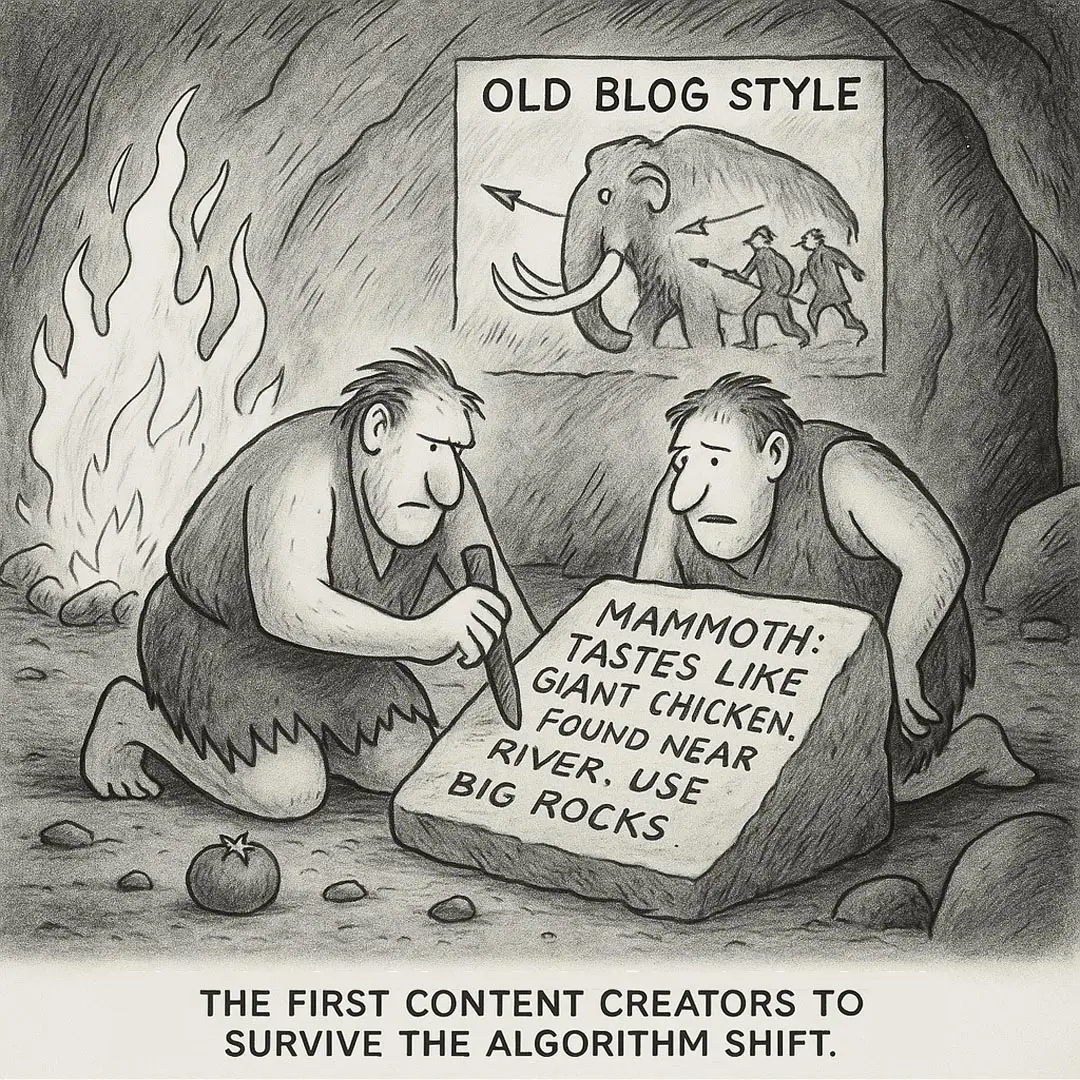The Content Formula Google’s AI Overview Actually Uses
Start with the answer. Or start losing.
The Structure That Wins Isn’t Sexy – It’s Strategic
It starts with clarity.
A single declarative sentence that answers the query, head-on.
Not a teaser. Not a lead-up. Just the answer, right where Google wants it.
Then comes the context. Not “storytelling.” Context. Usefulness. Support.
You’re not here to entertain. You’re here to be cited.
And finally, depth. Not fluff. Think examples, stats, counterpoints, nuance. What a smart human would ask next, your blog should already be answering. Because if you don’t? Someone else will get the placement instead.
Google’s AI Overviews aren’t here to vibe with your brand story. They’re here to compile answers. Fast, factual, citable answers.
This shift is brutal for the old blog style. But beautiful for those who adapt.
Google’s Not Ranking You. It’s Quoting You.
Here’s what most people still get wrong: AI Overviews aren’t “ranking” your content. They’re extracting it. <<<
They fetch, scan, and synthesize. That means your blog isn’t getting listed. It’s getting lifted, or it’s getting skipped. There’s no middle ground.
And what gets lifted? The stuff that hits clean in the first line. The content that feels less like a pitch and more like a trusted source answering a direct question.
Don’t start by painting the scene. Start by answering the dang question.
A Real Example That’s Been Picked Up and Quoted
Let’s look at a simple real estate search:
Query: What’s the median price for lake homes in Sister Lakes, Michigan this summer?
The wrong approach:
“If you’ve been dreaming of a lakefront escape, Sister Lakes is a hidden gem where…”
The right approach:
“The median price for lake homes in Sister Lakes this summer is between $650,000 and $700,000.”
Then follow up with:
“That’s about 8 percent higher than last year. Comparable lakes in the region include Austin Lake at around $580,000 and Diamond Lake at $720,000. Inventory is low and competition is strong, especially among out-of-state buyers.”
That’s not a guess. That’s what LLMs grab. Precision over persuasion. And no one’s quoting the lake dreamer. They’re quoting the data.
Still Want to Write Longform? Fine. But Frontload the Value.
You can still publish those 800-word think pieces. Just understand the first 100 words are what get you in the game.
Think of your content as a layered trust signal. The intro tells the AI, “We’ve got this.” The body proves it. The wrap-up keeps the human engaged. But that opener? That’s your ticket in.
Don’t seduce the reader. Satisfy the machine first. Charm the reader second.
Most blogs flip that order. That’s why most blogs are invisible in 2025. <<<
When you’ve buried the hook, you’ve buried your chance.
Start every draft with one simple question in mind: “If Google copied just this first sentence, would we be proud?” If not, rewrite it.
And if you’re still not sure if you’re being pulled into Overviews? Do the test. Search your core queries. Look at the AI summaries. Are your words in there? Are your URLs cited? Or are you nowhere?
If it’s the latter, give us a call – we’ll show you how to reverse engineer why your competition is there instead of you.
You’re Not Writing Like a Robot, But For A Robot
AI-first structure isn’t the enemy of creativity.
It’s the skeleton.
You still get to add muscle.
Personality.
Insight.
But the order matters.
You start with the machine.
You win the quote.
Then you serve the human.
That’s how visibility compounds.
AI doesn’t care if your writing is beautiful. But people do. So win the placement. Then keep the reader.
That’s how trust gets built. That’s how content becomes a growth channel again.
Still Confused? Start Here.
This is the new reality:
- If your first line doesn’t answer the question, Google skips it.
- If your structure isn’t obvious, the machine doesn’t find it.
- If your paragraphs meander, no one makes it past the summary.
Want to fix that? Ask a better question:
Would this article survive being copy-pasted into ChatGPT and summarized without sounding generic?
If the answer is no, you’ve got work to do.
Real FAQs, Real Answers:
1. How do I know if my content is getting quoted in AI Overviews?
Search the question your content answers. If your site’s name or phrasing appears in the AI Overview, you’re in. If not? You’re not. Tools can help, but manual spot checks are blunt and honest.
2. Should I still care about keywords?
Yes, but only as a byproduct of clarity. Google’s LLMs don’t reward keyword stuffing. They reward relevance. If your answer is clean, the keyword will show up naturally. That’s the new bar.
3. Do I need to restructure all my old blogs?
Not all. But if they’re hiding the answer in paragraph four, they’re dead weight. Start with your highest-performing posts. Rewrite the top 100 words to lead with value. Then build from there.
If you’re still solving this the way you did two years ago, maybe it’s time to talk to someone who isn’t.
TLDR:
Google’s AI Overviews don’t want your story. They want your answer. Lead with it, then build the context. Blogs that delay value don’t just get skipped. They get replaced.
Related Posts
AI Search Optimization Is the New Survival Skill – The Podcast
The Real Reason Your Content Isn’t Showing Up in AI Results



